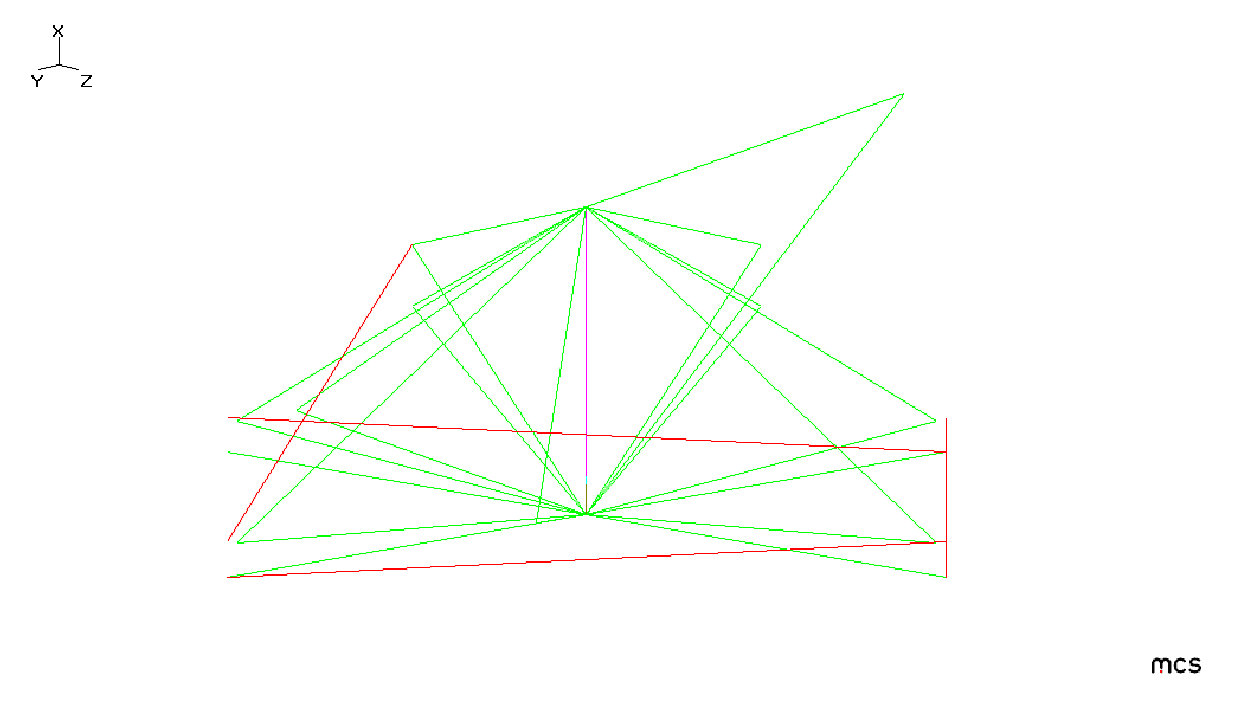The system, which characterises a sample oil offloading system, comprises a CALM buoy, which is located a distance of approximately 2000m from an FPSO, in a water depth of 800m. Fluid is transferred between the FPSO and the CALM buoy by means of a steel transfer line that hangs in a wave type configuration. The CALM buoy is moored using chain and steel wire rope mooring lines. The mooring lines are configured in four groups with two lines in each group. Mooring line pre-tension in each line is 800kN. A close-up of the finite element model in the region of the CALM buoy is presented in the figure below.

Close-up of CALM Buoy FEM
Because the main focus here is on the CALM buoy motions, FPSO motions are not considered in the various analyses of the system; instead the end of the transfer line remote from the buoy is fixed throughout. The only other constraints applied to the model are those at the mooring line seabed interface. Unlike a decoupled approach, there are no other prescribed vessel motions applied to the CALM buoy, mooring lines or steel transfer line.
Connaire et al., (2003) describes a range of different types of analyses of this system, of which only one type is performed here. This involves examining the response of the system to a unit height regular wave over a range of periods from 4s to 20s. The purpose of this is to determine CALM buoy RAOs for use in subsequent random sea fatigue analyses of the steel transfer line in either time or frequency domains.
In fact two separate systems are analysed in the example. The first comprises all of the elements described above. In the second the offloading line is omitted. Comparison of results from the two models will demonstrate the effect of the line on the CALM buoy motions, and emphasise the requirement for a coupled analysis capability for this type of system.